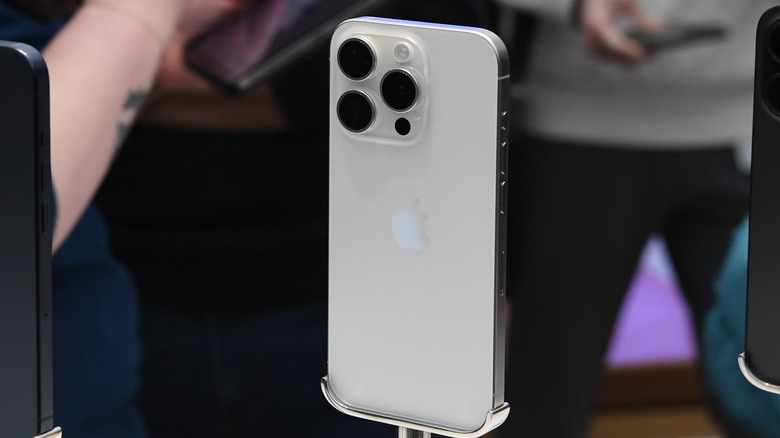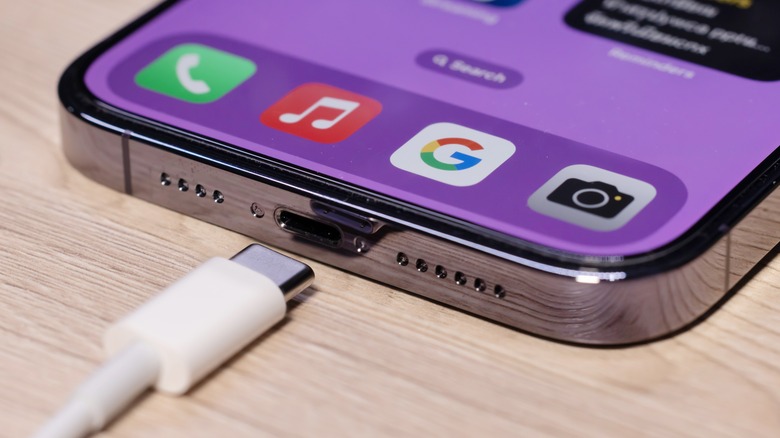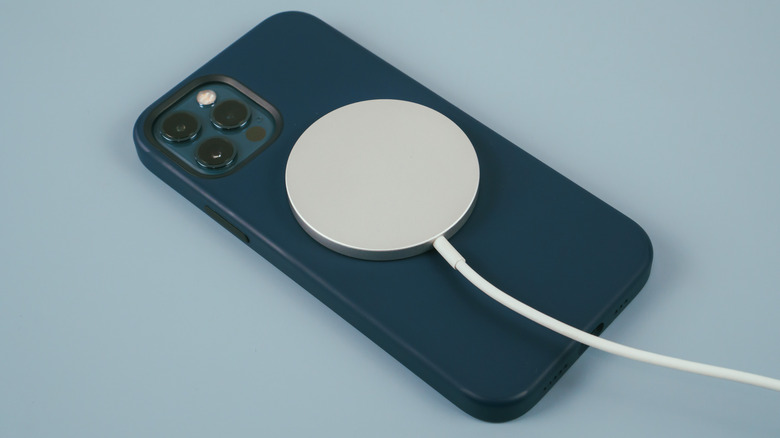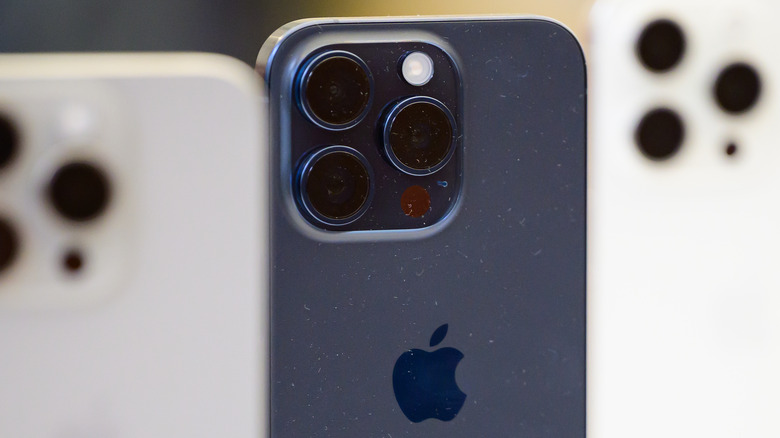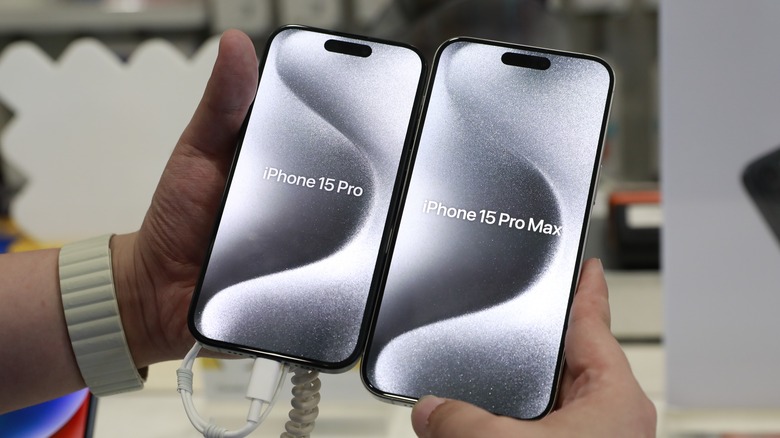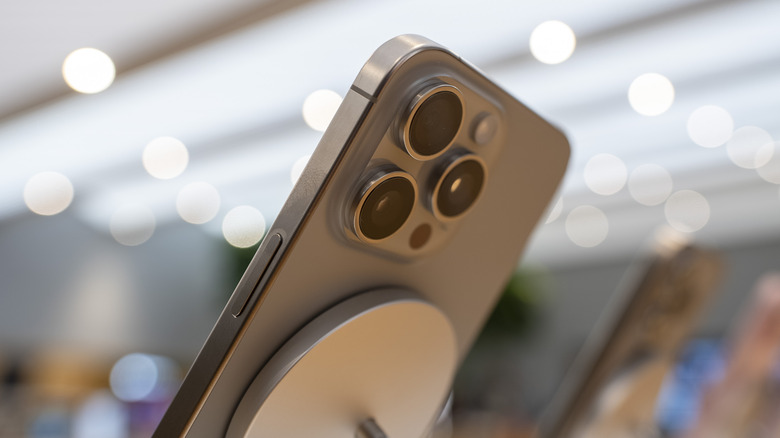5 Features We Wish Apple Would Add To Its Next iPhone In 2024
The iPhone 15 marked one of the most notable changes Apple has collectively bestowed across its smartphone portfolio in one go. The entry-point iPhones finally got the notch-free modern look and a long-overdue camera upgrade. The Pro models got a hardware refresh, new camera capabilities, and a peek into a future where the silicon inside can handle AAA game ports like "Resident Evil 4." "As mainstream iPhones go, though, the iPhone 15 makes the most cohesive argument we've seen from a few generations of Apple handset," says SlashGear's iPhone 15 review.
But take a quick look at the competition, and you will realize that save for silicon supremacy, Apple is a laggard in most areas. The pricey iPhones still lag at camera hardware innovation. They skimp on nigh-unforgivable conveniences like a high refresh screen. They certainly are a sloth when it comes to charging. It goes without saying that Apple takes a rather slow and cautious approach when it comes to making any dramatic changes. But we can always hope for it.
The 2024 iPhones won't be here for at least three quarters. However, rumors have already started pouring in. Unfortunately, we haven't heard anything too dramatic that's in the upgrade pipeline for the 2024 iPhone lineup. There are a few changes that we wish Apple made to its next wave of smartphones and justify the premium attached to them without looking like overpriced luxury pieces compared to the Android flagships out there.
Faster wired charging
Despite being the biggest player in the smartphone market, Apple has set a terrible example when it comes to charging innovations. Take, for example, the iPhone 15 Pro Max, which only allows 20W peak wired charging, 15W MagSafe wireless charging, and limits Qi charging to a mere 7.5W. For comparison, the OnePlus 12 allows 100W wired fast charging and 50W wireless charging.
Apple's best promises to fill the tank up to the halfway mark in around 30 minutes. OnePlus' latest can go from empty to full in just 26 minutes. But OnePlus is not even the fastest in the game. Xiaomi has offered 120W charging on multiple phones over the past few years, including budget-centric mid-range devices. The iQoo 10 Pro reached the 200W mark, while the Realme GT 3 touched the 240W wired charging output.
Yes, super fast charging is not without its flaws. Smartphone makers have made some impressive strides at developing safety checks related to heat management, chemical degradation, and voltage flux. Yet, the biggest names in the industry — including Apple, Google, and Samsung — continue to play it safe. While claims of longevity have been made by all adopters, we still don't have enough data to conclusively prove ultra-fast charging is totally safe.
However, Apple doesn't need to set a new record. Instead, all that the company needs to do is step up and get at least half-competitive. A bump to at least 40W or 50W wired charging adds a lot more convenience to the lives of iPhone buyers. After all, it's not about how quickly you can get a full charge. It's about how much charge you can get in short bursts of 10 or 15 minutes of plugged-in time.
Reverse wireless charging
This is one facility that I've most desperately wanted from the iPhones, and it's not just about the phone itself. Instead, it benefits the Apple ecosystem in general. I rarely carried a Lightning cable on me as long as I had my Samsung Galaxy S22 Ultra or its successor. That's because reverse wireless charging allowed me to juice up my iPhone by simply placing it on the glass shell of my Samsung flagship.
In fact, I even charged my Galaxy Buds Pro — and occasionally, the AirPods Pro — by just putting it over the Samsung phone's back. It's a convenience that saved me the hassle of carrying extra chargers and cables. For anyone invested in accessories that support wireless charging, it's a convenience that needs to be experienced to realize its worth.
Apple doesn't allow reverse power share. That, despite the fact it has one of the more secure forms of wireless charging hardware that relies on a magnetic ring for a more secure position lock between two surfaces to allow power transfer. It's the same perk that has spawned a whole bunch of accessories that allow the iPhone to get juiced while practically hanging in the air while a wireless pad is attached to the back of a stand.
Earlier in 2023, a 9to5Mac report, citing internal sources, claimed that Apple was close to offering a full reverse wireless charging facility on the iPhone 14 series but couldn't meet the deadline. The engineering team is reportedly working to offer that facility on newer iPhones, but that is yet to happen. We are dearly hoping that in 2024, the iPhone 16 series will finally allow bidirectional wireless charging.
A next-level zoom camera
One of the most recurring demands that iPhone users have been making for years is a more capable zoom camera. Apple delivered just that with the iPhone 15 Pro Max, giving its 12-megapixel telephoto camera a 5x optical zoom range using a novel tetraprism tech and fusing the autofocus module with the sensor-shift stabilization platform. The digital zoom range, however, is capped at 25x.
On the other hand, Samsung's Galaxy S23 Ultra serves a 10-megapixel periscope camera that delivers 10x optical zoom and relies on the Optical Zoom Stabilization tech to keep the photos from appearing blurry due to hand movements. As far as digital zoom goes, the Samsung flagship delivers a 100x range, which can produce some stunning results with stable hands or still support. An argument can be made here that digital zoom is nearly useless beyond the 20x or 30x range. But just take a look at the Pixel 8 Pro, which relies on an AI-assisted pixel prediction system to upscale zoom shots.
Realistically, the chances of Apple giving the iPhone 16 range an enhanced zoom capability are low, given the company's love for making slow and steady progress. Moreover, analyst Ming-Chi Kuo has predicted that in 2024, Apple will put the tetraprism zoom camera on both Pro models. That further diminishes the chances of a proper periscope-style zoom system on the next-gen iPhones.
However, a folded lens system could be the way forward if Apple seeks to go beyond the 5x zoom range and enter the territory of phones like the Galaxy S23 Ultra with its 10x optical zoom output. Of course, in the near future, Apple will still keep the zoom camera facility locked to the Pro models and keep the standard and "Plus" models limited to a dual-camera system.
120Hz screens across the board
This one is the most obvious feature update that iPhone fans have been pushing for years, and it makes a lot of sense. Apple currently hides the perk of a higher refresh screen behind a $1,000 premium, at the very minimum. But if you look at the Android ecosystem, it's easy to find phones that cost as little as $200 and offer a 90 Hz or 120 Hz screen. Interestingly, Apple appears to be buying into the allure of a high-refresh screen for only its premium Pro phones.
One can argue that Apple wants to keep a feature distinction between its entry-point mainline iPhones and the premium Pro models. But that logic doesn't really hold much merit. Aside from the value perspective, one needs to understand that a high refresh-rate screen is no longer a top-tier perk. It's now become a necessity, and at least any phone above the barebones entry-level category hits the 90 Hz mark.
But one asks for a 120 Hz screen on all iPhones, not just for the sake of a smooth UI scrolling experience. Apple has made some major leaps in the past couple of years with its silicon tech and gaming endeavors. Take, for example, "Resident Evil Village," a direct AAA port that runs flawlessly on the current-gen iPhone 15 Pro pair.
More titles such as "Resident Evil 4," "Death Stranding," and "Assassin's Creed Mirage" are coming soon, thanks to Apple's work with the Metal gaming architecture. With a gaming-conducive future for the iPhones all but certain, it would make sense for Apple to give its phones a 90Hz or 120Hz screen so that users can truly enjoy a high-FPS gaming experience.
Better thermals
With the arrival of the iPhone 15 Pro pair, Apple made some notable hardware charges, including ditching stainless steel in favor of titanium. Apple said it used a thermo-mechanical process in which the titanium bands surround a substructure derived from aluminum. The company claimed to have employed a solid-state diffusion technique for melding the two metals together, noting that it is lighter, stronger, and more efficient at heat dissipation. However, the latter doesn't appear to have materialized as well as Apple had expected.
Soon after the phones hit the shelves, users complained about overheating issues. Apple pointed fingers at non-optimized apps, but it's surprising to note that a non-gaming app wreaks such a thermal fiasco. Unfortunately, even after Apple seeded a corrective update, those issues continued to persist. A quick look at Reddit reveals scores of users complaining about an overheating iPhone 15 Pro.
With the iPhone 16 series, we are hoping for Apple to do a better job at thermal management. Samsung made some major strides with the Galaxy S23 series, packing a much bigger vapor chamber cooling system inside the phone that enhanced the thermal efficiency by up to 2x factor. iPhones tend to run hot at demanding games and even hi-res video capture, often resorting to measures such as dimming the screen. We hope that Apple will reimagine the thermal hardware on the 2024 iPhones, especially the Pro models with a more powerful SoC inside.
